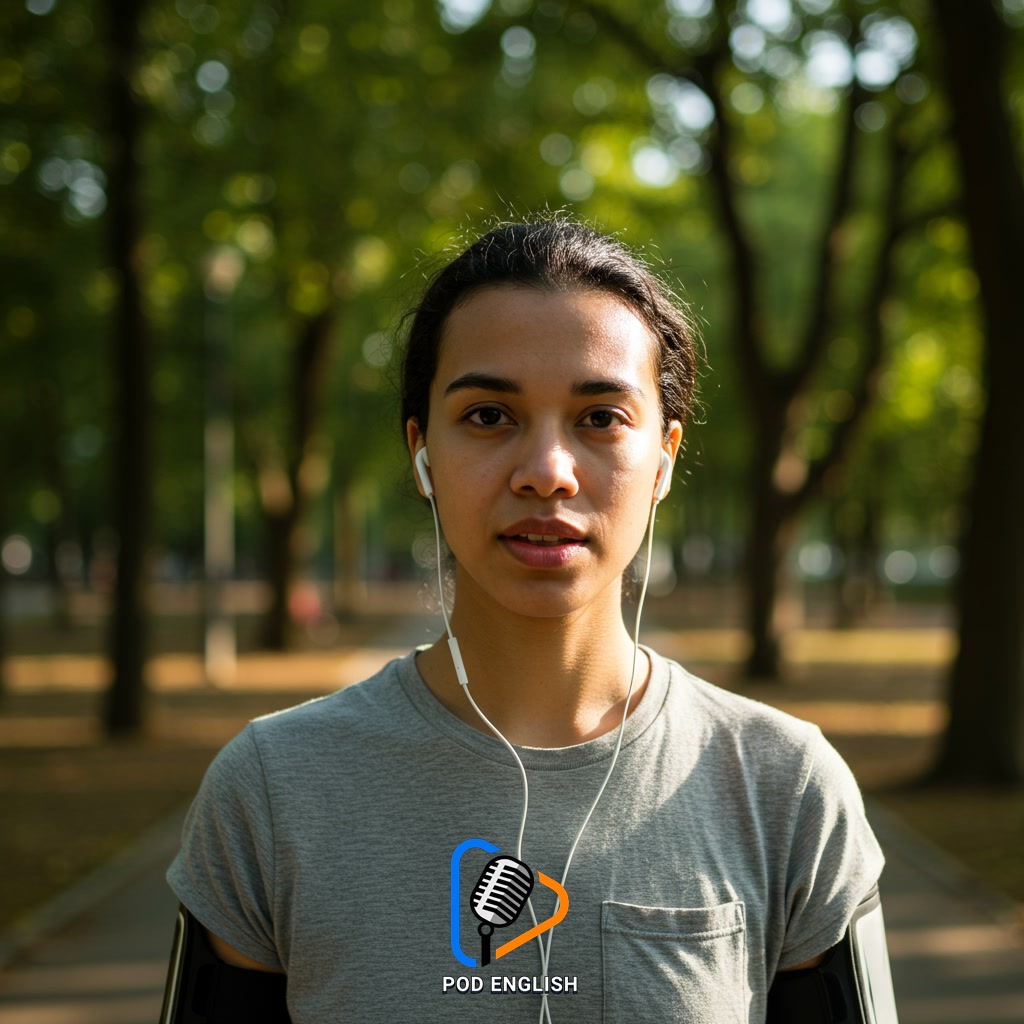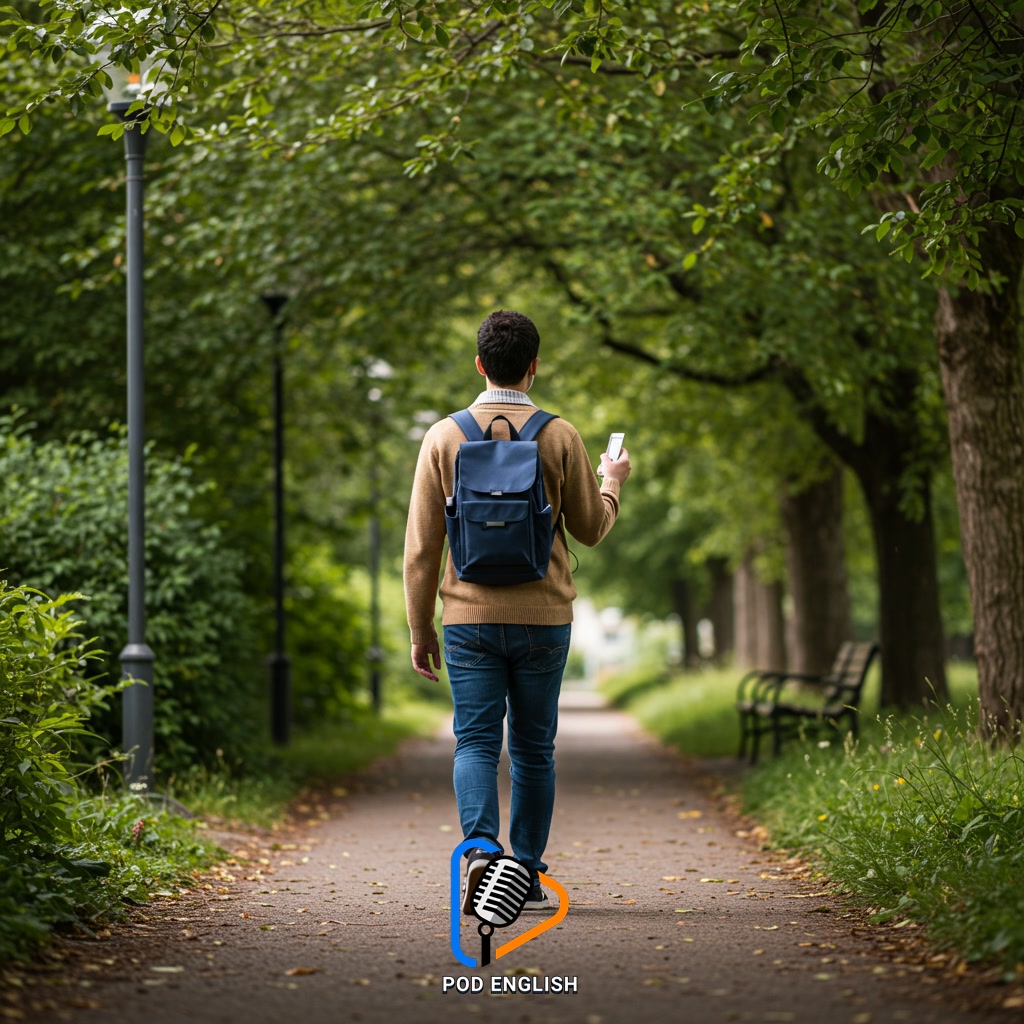Learn English
Walk to Learn English Faster & Study Smarter

This content explores the benefits of combining walking with your English learning efforts to accelerate progress and improve study effectiveness. It delves into practical strategies for integrating physical activity into your language acquisition routine. By linking movement with learning, individuals may enhance cognitive function and memory recall, enabling them to acquire English skills more quickly and intelligently. This method offers a dynamic approach to mastering the language.
Table of Contents
- Section 1: Introduction: Unlocking Faster English Learning Through Movement
- Section 2: The Science Behind Walking and Brain Boost for Learning
- Section 3: Practical Ways to Combine Walking and English Study
- Section 4: Specific English Learning Activities for Your Walk
- Section 5: Maximizing Your Walk-and-Learn Sessions for Smarter Study
- Section 6: Making Walk-to-Learn a Sustainable Habit
Section 1: Introduction: Unlocking Faster English Learning Through Movement
Learning English is a journey that often involves focused study. However, did you know that simply adding movement, like walking, could significantly accelerate your progress? This section introduces the fascinating concept that physical activity is not separate from cognitive function, but rather deeply connected. Integrating walking into your study routine can enhance blood flow to the brain, sharpen focus, improve memory recall, and boost overall cognitive performance – all essential elements for mastering a new language. By exploring this dynamic approach, you’ll discover how combining movement with your English studies can unlock faster learning and make your study time smarter and more effective. This introduction lays the groundwork for understanding the powerful link between physical activity and successful language acquisition.

Section 2: The Science Behind Walking and Brain Boost for Learning
Building on the idea that movement helps learning, this section explores the fascinating science behind it. When you walk, your heart rate increases, pumping more blood and oxygen to your brain. This enhanced blood flow nourishes brain cells and helps them function more efficiently. Walking also stimulates the release of special proteins like Brain-Derived Neurotrophic Factor (BDNF), often called “Miracle-Gro” for the brain. BDNF supports the growth of new brain cells, strengthens connections between existing ones, and improves neuroplasticity – the brain’s ability to reorganize and form new pathways. For language learning, this means improved memory retention, enhanced focus during study sessions, and a greater capacity to absorb and process new vocabulary and grammar rules. Essentially, walking primes your brain to be more receptive and effective at learning English.

Section 3: Practical Ways to Combine Walking and English Study
Building on the understanding that walking boosts brain function, let’s explore practical methods to integrate this activity into your English study routine. Instead of sitting at a desk for hours, try listening to English podcasts, audiobooks, or language learning apps while taking a brisk walk outdoors or on a treadmill. You can also use walking time to mentally review vocabulary flashcards, practice speaking English aloud by describing your surroundings, or even engage in a conversation with a study partner while strolling. The rhythmic motion of walking can help you focus and retain information better. Break up longer study sessions with short walks, or dedicate specific walking times solely to active English practice. Finding what works best for you will make language learning more dynamic and effective.

Section 4: Specific English Learning Activities for Your Walk
Now that we understand the cognitive boost walking provides, let’s get specific about *what* English learning you can do while on the move. Instead of just a leisurely stroll, turn your walk into an active study session. You could listen to English podcasts or audiobooks, focusing on comprehension and pronunciation. Another effective strategy is to review digital flashcards on your phone for vocabulary or grammar points. You can also practice speaking aloud, perhaps summarizing what you just heard or describing your surroundings in English. Even using language learning apps that don’t require constant screen interaction can work. The key is to choose activities that keep you engaged with the language while allowing you to stay aware of your environment and enjoy the physical activity.

Section 5: Maximizing Your Walk-and-Learn Sessions for Smarter Study
active learning session. To truly maximize your walk-and-learn sessions for smarter study, make them highly intentional. Instead of just passive listening, actively engage with the material. You could listen to English podcasts or audiobooks, pausing to repeat phrases or summarize concepts aloud. Use the rhythm of your walk to practice pronunciation or recall vocabulary words from a specific topic. Another effective method is to review flashcards mentally or vocally, testing yourself on definitions or sentence structures. The physical movement can help cement these new concepts in your memory. By focusing on specific learning goals during your walk, you transform simple exercise into a powerful tool for accelerating your English fluency and comprehension.

Section 6: Making Walk-to-Learn a Sustainable Habit
To truly make walk-to-learn a lasting and effective part of your English acquisition journey, the key lies in establishing it as a sustainable habit. Consistency is more important than intensity when you’re building a routine. Begin with manageable steps; perhaps integrate a short 15-minute walk-and-listen session into your daily or weekly schedule. Treat it like any other important appointment you wouldn’t miss. Finding a specific time and route can help cement it. Make it enjoyable by varying your learning materials – podcasts, audiobooks, flashcards, or reviewing notes – and perhaps exploring different walking paths. Tracking your progress, even informally, can provide motivation and reinforce the habit, turning these active learning sessions into a natural and anticipated part of your English study plan.














